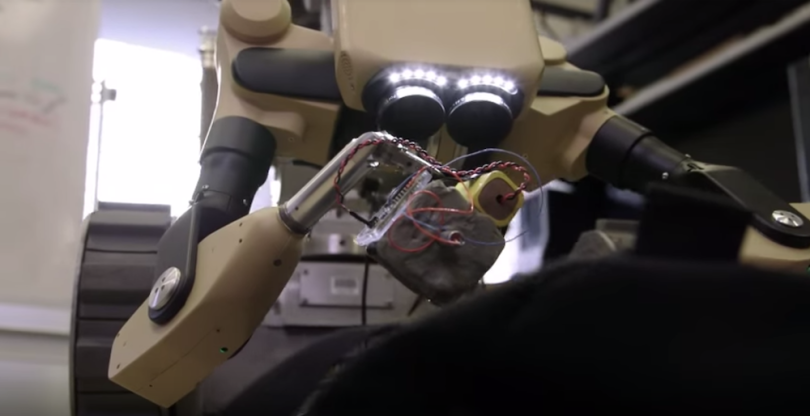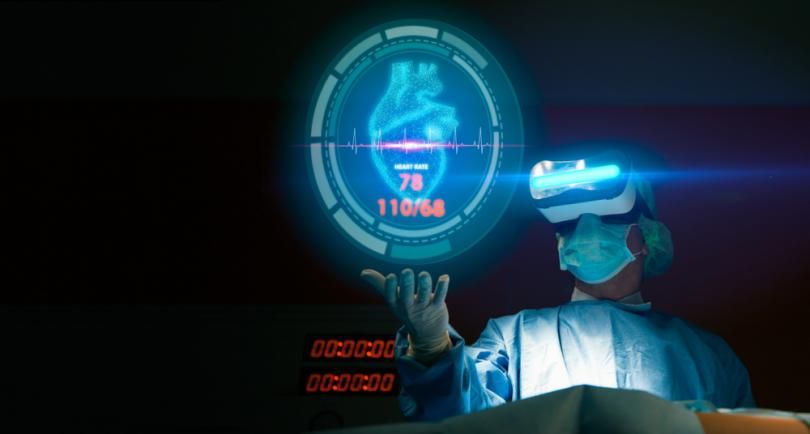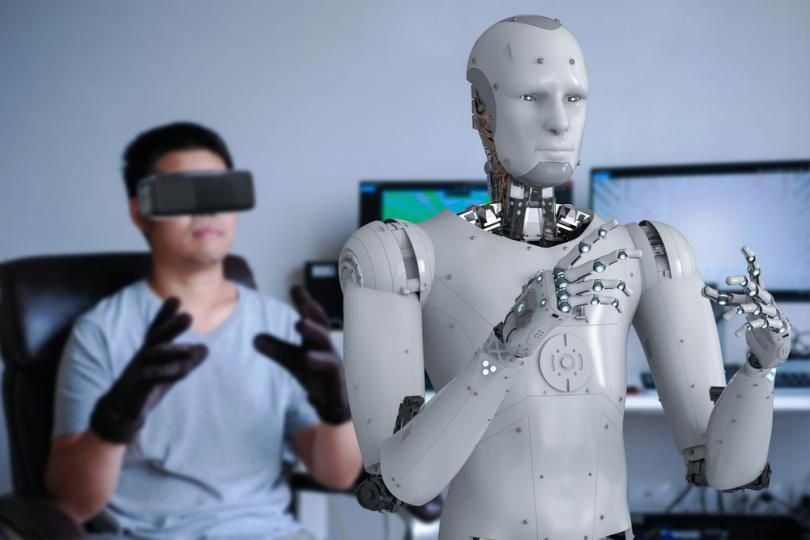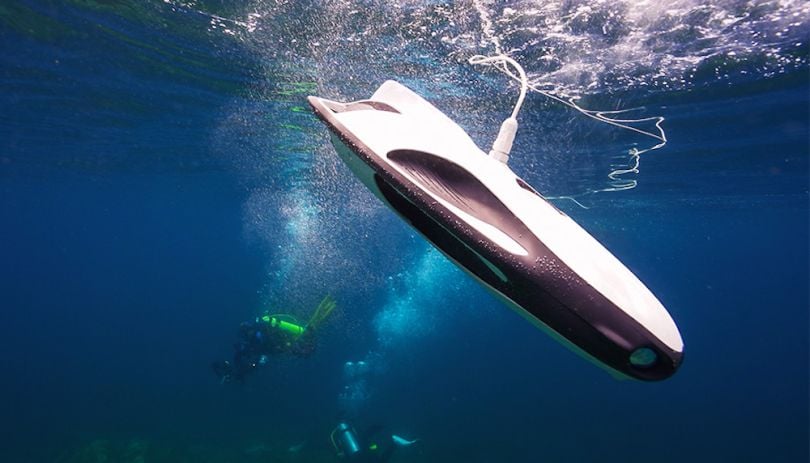Imagine this: You're in a crowded area when someone notices and reports a suspicious-looking package. Authorities swoop in, determine it might contain an explosive device, clear the area and call in a specially skilled bomb squad. Regardless of training, however, their lives are on the line.
But what if there were an alternative? That’s where Taurus comes in.
The brainchild of SRI International, which also created Apple’s digital assistant Siri, Taurus is a bomb-disarming robot that's a bit different from the ones that bomb squads have used for decades. Rather than merely transporting or detonating bombs, Taurus diffuses them. In doing so, it preserves valuable forensic evidence that can help authorities identify a bomb's maker.

But Taurus isn't just programmed and then let loose to do its thing. Instead, it's controlled remotely through VR technology that allows bomb technicians to intuitively deal with potentially hazardous situations from a safe distance. In a mecha-like way, VR robots are mechanical extensions of their flesh-and-blood operators. As such, they're even more precise than typical remote bots. And in scenarios like the ones Taurus deals with, where one wrong move can cause a whole operation to literally go up in smoke, precision is key.
When it comes to VR-controlled robots, Taurus has plenty of company. Check out these other examples.

Paging Dr. Robot
Here's another scenario: imagine someone sustains a traumatic injury and needs to be rushed to a hospital. In such a case, every second counts. But what if the closest hospital is hours away and doesn't employ a necessary specialist?
It's another situation in which a VR robot could save the day (and maybe a life) by allowing a surgeon to operate from miles away. Taurus might expand to that realm someday, but Intuitive's da Vinci system is already there — and has been for a while, reportedly completing more than five million minimally invasive surgeries by 2017. With 4,400 da Vinci robots in hospitals around the world and more than 44,000 surgeons trained to use them, its popularity continues to rise.
Over at Vicarious Surgical, which is backed by such tech titans as Marc Benioff and Bill Gates, VR robots give surgeons a more immersive view of the action by virtually placing them inside patients. Doing so allows for exploration beyond the incision site and supposedly results in less invasive surgeries.

VR robots to the rescue
Researchers at the Italian Institute of Technology (IIT) are working on a VR robot named Walk-Man that moves around on two mechanical legs. Operated from a distance and designed to take the place of humans in emergency situations, its potential uses include fighting fires, stopping gas leaks, navigating earthquake-damaged buildings and more.
IIT is also responsible for the VR robot iCub, which is bi-pedal like Walk-Man but much smaller. Here's a video of iCub in action (fair warning: it's a little creepy):
From the heights to the depths
Besides rescuing people from dangerous situations (and possibly inspiring nightmares), VR robots are also being used for creative and recreational purposes. Drones are especially popular.
DJI makes several VR-compatible ones, including the Mavic Pro and the Phantom 4, that put pilots' eyes in the skies. Professional photographers can use them to set up the perfect shot and hobbyists can virtually experience the thrill of flight.
At far lower altitudes, aquatic drones (like those made by PowerVision) let users explore underwater environments for the purposes of fishing, photography, maritime rescue or even an aquatic expedition.

Teach your robots well (using VR)
While many robots are VR-controlled, some are actually VR-programmed.
Covariant.AI uses VR, artificial intelligence and various deep learning techniques to teach robots to perform certain tasks. The traditional method of programming robots by writing code is often labor intensive and time consuming. With Covariant's technology, humans use VR to show robots the ropes, then robots mimic what they've learned. Trial-and-error-based reinforcement learning, by which robots are "rewarded" for doing something correctly (kind of like a digital Milk-Bone), is also part of the process.
"We start with a person wearing an off-the-shelf, commercial VR system," Covariant.AI co-founder Pieter Abbeel told Modern Materials Handling in 2018. "The person holds a teaching pendant and performs the [specific] action. The neural net learns from these demonstrations how the robot’s motion should depend on the configuration of the environment, which will be different every time. The pendant tracks the motion of the person and translates it into a motion learned by the neural net. At this point, the person needs to demonstrate the action 100 to 1,000 times, depending on the environment, for the neural net to collect enough information about the motion... And, we usually have an 80 percent to 90 percent success rate."
That seems to bode well for what might lie ahead.
Similarly trained, could Taurus one day diffuse bombs on its own? Could da Vinci bots replace surgeons? Maybe.
In the foreseeable future, though, it's a safe bet that VR robots will remain far more dependent on humans than the other way around.
All images via Shutterstock and company websites.




